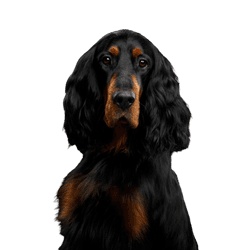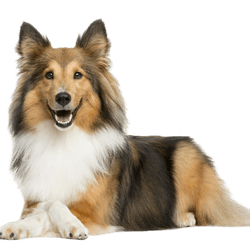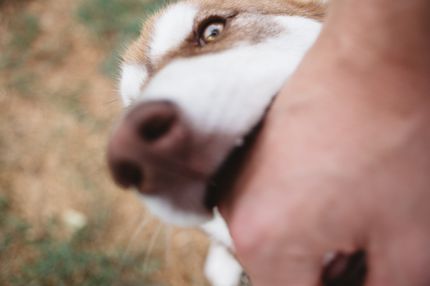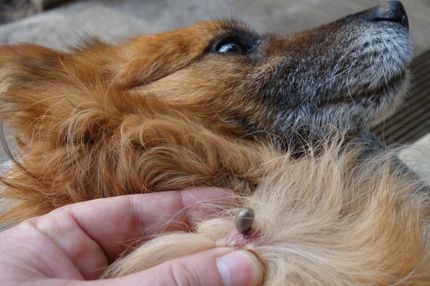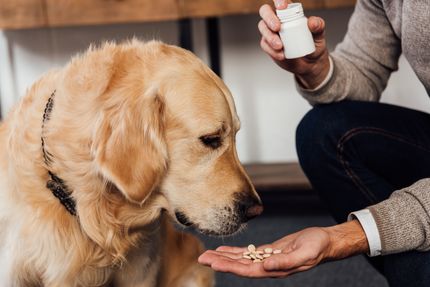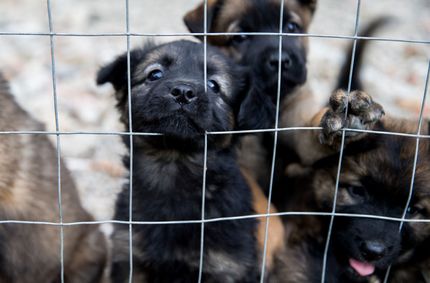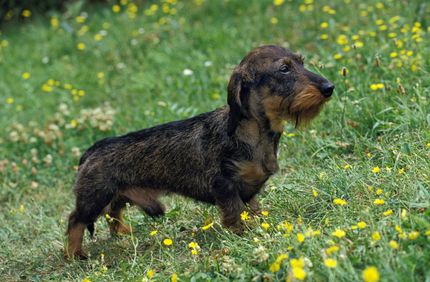Facts & Origin
Origin and history
The Gordon Sheltie is a mixed breed, resulting from the mating of the Gordon Setter and the Shetland Sheepdog. This mixed breed inherits qualities from both parents and is therefore an excellent choice for pet lovers all over the world.
The Gordon Setter originated in Scotland and was developed in the 17th century as a working dog for hunting. The Shetland Sheepdog, commonly known as the Sheltie, originated in the Shetland Islands of Scotland and was originally used for herding work. The Gordon Sheltie thus combines the working characteristics of both parent breeds.
With its high intelligence, friendly disposition and strong work ethic, the Gordon Sheltie is a remarkable hybrid breed that is well suited as both a working and family dog.
| Alternate Name | - |
| Origin | UK - Scotland |
| Life expectancy | 10 - 13 years |
| Care requirements | low-maintenance - high-maintenance |
| Activity level | average - high |
| FCI group | not recognised |
| AKC group | not recognised |
| KC group | not recognised |
More Gordon Setter mixes
More Shetland Sheepdog mixes
Attitude, character and temperament of the breed
Character traits of the Gordon Sheltie
The Gordon Sheltie is a child-friendly, affectionate and loyal companion. His friendly and playful nature makes him an ideal family dog. Since both parent breeds tend to form strong bonds with their families, it's no surprise that Gordon Shelties are also considered true family dogs.
They are intelligent, quick to learn, and love mental challenges, which makes them easier to train. They are courageous, which makes them excellent watchdogs. Despite their energetic nature, they also have a gentle side that allows them to live well with children and other pets.
Like all dogs, Gordon Shelties need regular exercise to stay fit and regulate their energy levels. A balance of physical and mental stimulation is ideal for this breed.
Character
Usage
Health and care
Given its biracial heritage, the Gordon Sheltie may inherit several health problems from its parent breeds. These may include:
- Hip dysplasia: a joint condition that can cause pain and difficulty moving.
- Progressive Retinal Atrophy: An eye disease that can cause loss of vision.
- Von Willebrand disease: A blood disorder that can cause excessive bleeding.
Regular veterinary visits are therefore essential to detect and treat these conditions in a timely manner.
Breeding the Gordon Sheltie
Breeding a Gordon Sheltie requires a thorough knowledge and respect for the health and well-being of the parents. It is important to mate only healthy parents and to make sure that the puppies are well socialized and prepared for their future families.
While a few breeders specialize in Gordon Shelties, we stress that prospective owners should always carefully consider whether breeding practices are ethical and focused on the welfare of the animals.
What does this mixed breed look like?
As a mixed breed, the characteristics of the dogs can vary greatly. The Gordon Sheltie is mostly characterized by its long, smooth and dense coat that strongly resembles that of the Gordon Setter parents. With an interesting color mix of black, rose gold and white, this dog is a valued companion for those looking for something special.
| Fur length | medium - long |
| Fur | wavy - flat coated |
| Ear shape | Floppy Ear - Tilt-ear |
| Tail | fanned out |
| Anatomy | strong, sporty, sporty |
| Size ♀ | 33 - 66 cm |
| Weight ♀ | 6 - 32 kg |
| Size ♂ | 33 - 69 cm |
| Weight ♂ | 6 - 36 kg |
| Suitable For | - |
Known Diseases
Eye diseases
Often occur with allergies and intolerances.
Ataxia
Ataxia (from Greek ἀταξία ataxia 'disorder' 'irregularity') is a generic term in medicine for various disorders of movement coordination. Ataxia can occur even when there is no paralysis (paresis), that is, when there is normal muscle strength.
MDR1 defect
The MDR1 defect is a defect in the MDR1 gene that can occur in some breeds of dogs and in humans. This results in the deficient or absent synthesis of a certain protein which is an important component of the blood-brain barrier, leading to hypersensitivity to some drugs.
FAQ
-
This mixed breed tends to be very obedient and playful, with a strong bond with the owner. They are also very intelligent and can be trained well.
-
This mixed breed usually has a lot of energy and enjoys sports activities, so for example, walking, running, swimming and hunting exercises are popular activities.
-
Since this hybrid breed has a strong bond with the owner, it requires a lot of attention and interaction. Daily grooming of the coat and regular training are also important.
-
No, these dogs are not prone to aggression. If properly socialized and trained, they have a friendly and nice temperament.
